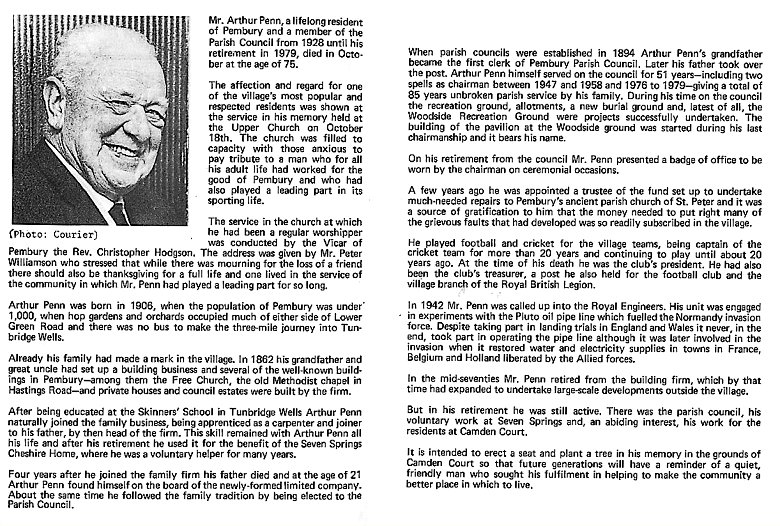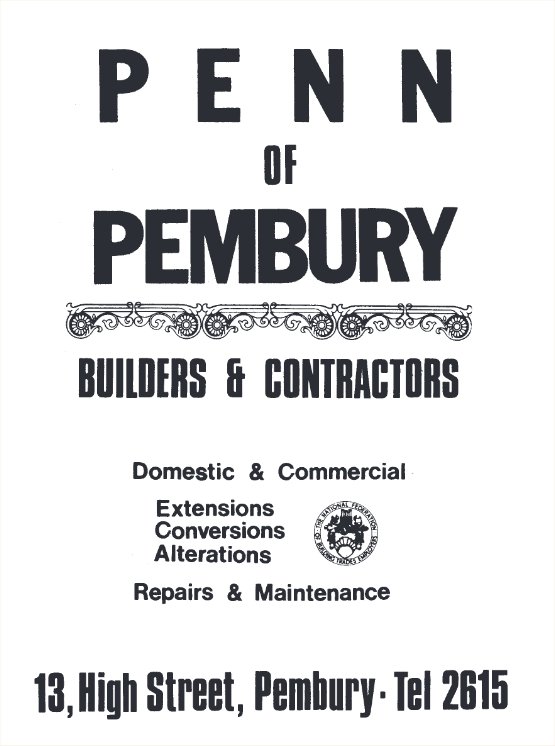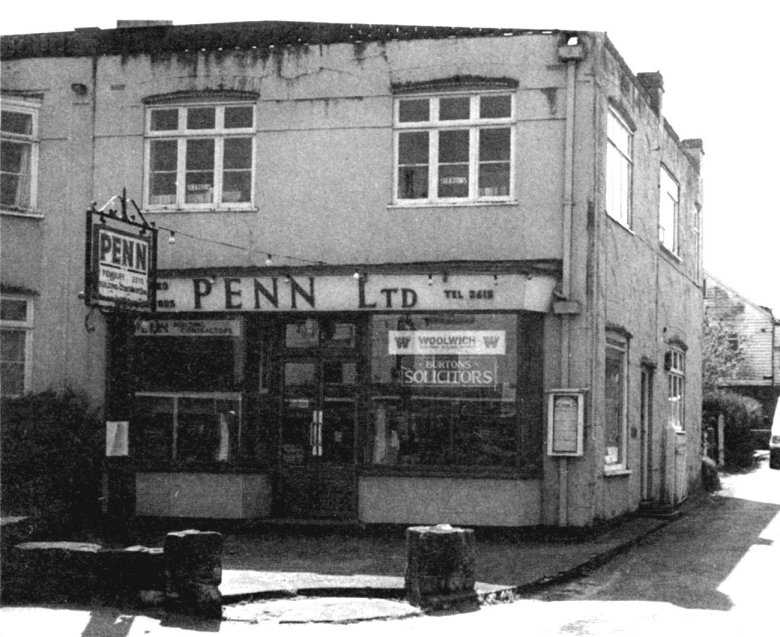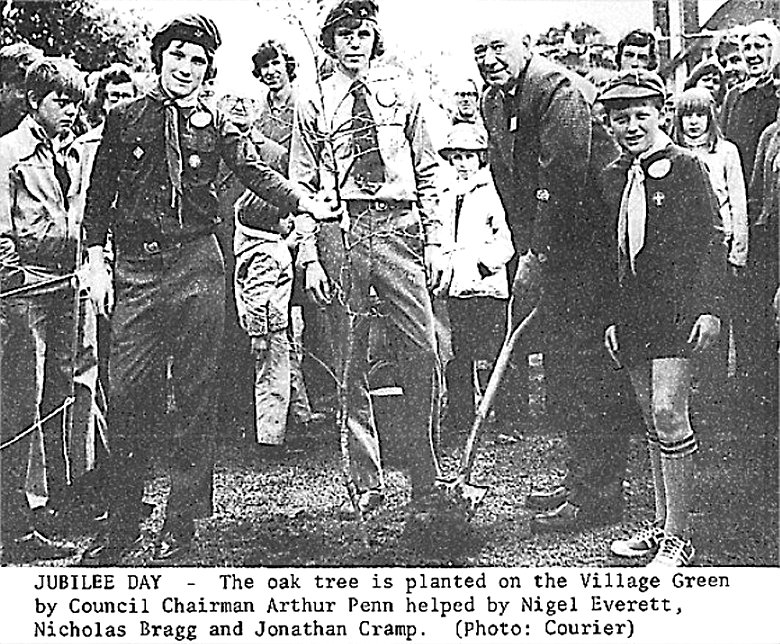Arthur
Penn by Robert
Allen
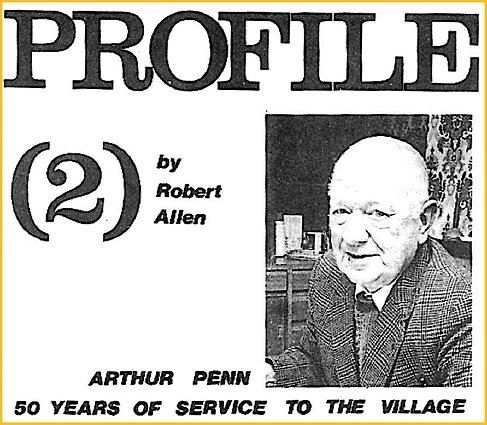
Penn’s of Pembury - the name goes with the
same sort of inevitability as bread and
butter. And it is inevitable too, that the
head of the Penn family, Mr. Arthur Penn,
should have played a leading part in the
life of the Village for over half a century.
On April 28 Arthur Penn, Chairman of Pembury
Parish Council, will celebrate 50 years
continuous service on the Council. When he
was elected as a young man of 21 the
Chairman was the head of the Village School,
Mr. A.E. Naish.
The Penn family has been connected with the
Parish Council ever since its foundation in
the last century. His grandfather and father
were, respectively, the first and second
Parish Clerks and when he became a member
himself his grandfather's widow was a Parish
Councillor.
The G. and F. stand for his grandfather
George and his great-uncle, Frank who set up
the business in 1862. George was a carpenter
and Frank was a bricklayer. As was customary
in those days their work included
undertaking - a side of the business which
continues to this day.
Frank died about the turn of the century and
George in 1910. By that time Arthur Penn's
father, Ernest George, was in the family
firm which he ultimately took over.
Already they had left a considerable mark on
the Village. Penn built the Free Church and
its manse, the old Methodist Chapel in
Hastings Road, Pembury Ridge, a large house
now demolished and its grounds developed as
a housing estate in Lower Green Road, much
of the council estate at Lower Green,
another at Bo-Peep and a number of private
houses besides.
Arthur Penn went to Skinners’ School and
when he left in 1923 he naturally joined the
family concern. He was apprenticed to his
father as a carpenter and joiner – a skill
he can still exercise.
But only four years later his father died.
Arthur Penn was just 21 and Penns became a
limited company with young Arthur as company
secretary and a member of the board. He
recalls that when Penns built Camden Avenue
in the early thirties the far end of the
road was limited to its present position
because the by-pass was planned to go just a
little to the south.
But life in Pembury was not all work for
Arthur Penn. As a youngster he played table
tennis and badminton at the old Church
Institute at Lower Green - then the Village
Community Centre.
He played cricket and football for the
Village. Indeed his connection with the
cricket club continues to this day as its
President. He played until the 1960's and
was captain of the side for over 20 years.
In addition he was treasurer for many years,
a post he also held for the football club
and the British Legion.
In 1942 Arthur Penn was called up into the
Royal Engineers. He served in various
stations in Kent. Then his unit was engaged
in experiments with the Pluto oil pipe line
that played so important a part in the
Normandy invasion in 1944, "But although we
did all the trials, including wet landings
in the Isle of Wight and the Welsh coast, we
never had a hand in operating it in action",
he says.
However, he did get to Normandy after D-Day,
spending the next few months restoring the
water and electricity supplies to the
shattered city of Caen. Later he was in
Belgium and Holland helping to repair the
damage done by the battles which ended in
the German retreat.
If the atom bomb had not been dropped on
Hiroshima and Nagasaki Arthur Penn would
have been in the invasion force being
assembled to storm the Japanese mainland. As
it was he spent the last winter of his
service peacefully in India. Shortly before
he was demobilised, there was a chance of
going to Borneo to re-start the damaged oil
wells there. "If I'd gone out there and got
mixed up in the oil business I might never
have returned to Pembury", he says.
With his wife, Grace, he is a member of the
Parish Church and has recently been
appointed one of the trustees of the appeal
fund launched to raise money for the
preservation of the old Church.
Arthur Penn's lifetime connection with the
business, sporting and administrative life
of Pembury indicate a love for village life
and a belief in its value. “When I first
joined the Parish Council", he says, "the
population of Pembury was under 1,000. Now
it's about 6,500. There is a great turnover
of population, which is reflected in the
composition of the Parish Council. I want to
see Pembury become the community it once
was".
Arthur Penn's memories of Pembury - and
there are many older residents than he -
show just how the Village has changed with
the motor car age.
Before World War 1 there was no building in
Lower Green Road between the present Roman
Catholic presbytery and Knights Place. Hop
gardens lined most of both sides of the road
– there was a hop garden on what is now the
recreation ground. In the hopping season
hordes of London pickers descended on the
Village, shopkeepers erected metal grilles
in front of their counters and the High
Street would be lined with horses and carts
bringing the hop pickers to the Village.
Between the wars and again in the fifties,
Pembury was faced with threats of a
take-over by Tunbridge Wells. Incorporation
in the old royal borough was fought off.
Only in 1974 with the reorganisation of
local government did Tunbridge Wells get
into Pembury and a dozen other villages
through the back door. Perhaps one good
result of this shake-up has been to make
Parish Councils take a greater pride in
their independence because today it can
fairly be said they are the only local
authorities all of whose members are
personally involved with the areas they
represent.
Arthur Penn is certainly proud of what
Pembury Parish Council has achieved in the
past. About 70 years ago it raised a loan to
put sewers into the Village - a job they
wouldn't be allowed to do now. The loan was
raised, the sewers laid and the money repaid
by the mid-twenties. And, says Arthur Penn,
the work was of such good quality that, with
the exception of the link between the
primary school and the sewage works, those
sewers are still in use today.
Other loans followed - for the Henwood Green
allotments, street lighting, the recreation
ground, the burial ground and latest of all,
for the Woodside recreation ground.
Now that he has retired from active
business, Arthur Penn has the time to be a
voluntary helper at the Seven Springs
Cheshire Home in Tunbridge Wells. Perhaps
Arthur Penn's philosophy of life is summed
up in his remarks about the church
restoration work he has been involved in
during his business life. "I like to think
that what I was doing will remain in use for
centuries". This sense of continuity has
inspired his public service in the sphere of
Village life. That is the life compounded of
local pride and fellowship which is the best
bulwark against the drab uniformity which
the pessimists fear is threatening us all.
Above - Penn's
office in the High Street
Above - from the
Pembury Village News 1977
|
